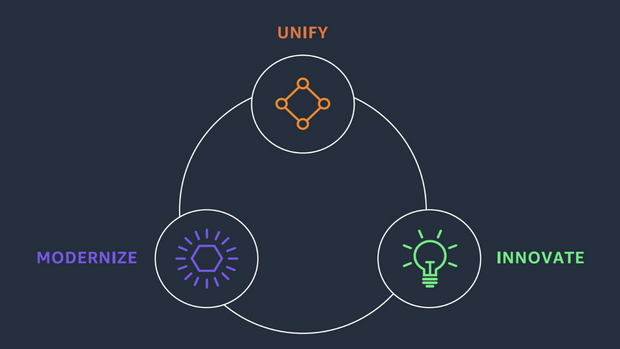While there are increasing reports that suggest a growth slowdown amongst major cloud providers and hinting to the decline of the hyper-expansion era within the cloud industry, AWS has put emphasis on the role of data in the next wave of innovation for enterprises.

“I am beyond excited about what I’ve seen happen in the data space, especially over the last three years which has been challenging for a lot of folks. But frankly, that challenge has often resulted in new and big thinking in innovations,” said Wayne Duso, AWS VP for storage, hybrid edge, and data services.
Second to its human workforce, Duso regards data as an organizations most important resource – a crown jewel which when leveraged, does not only control costs and facilitate innovation but deliver new streams of revenue and add new value to customers as well.
With the transformational impact surrounding data and data analytics for the last couple of years, AWS expects organizations to continue this as they move forward and will only accelerate further. With rising consumer concerns on cost, Duso says that AWS agrees with notion and reiterated how AWS helps customers improve their respective cost profiles through cost-efficient opportunities.
Duso cited a 2022 IDC report on the business value proposition offered by AWS where the it provides organizations with up to 50% lower five-year cost of operations, 25% lower cost of infrastructure, 47% more efficient IT infrastructure teams, and 2.3X new features delivered per year.
“We offer near-unlimited opportunities to really accelerate their innovations, streamline their operations, and really improve the experiences for their customers. Among the many benefits of moving your data to the cloud – our scalability, reliability, security, just to name a few. Cloud migration also allows organizations to really yield cost-savings in a number of ways, in fact, the core value proposition of the cloud is to reduce costs and allow customers to pay for what they use,” he explained.
Based on a new market research published by Meticulous Research, the global cloud computing market is set to reach $1.402 trillion by 2030 with a compound annual growth rate (CAGR) of 16.8%, driven primarily by increased government-led initiatives and the adoption of cloud computing solutions among businesses, offset by the complexity in navigating the multi-cloud environment.
Meanwhile, the growing movement on cloud spend optimization is led by companies’ fear of recession, and the natural optimization of spending following their robust growth. An ETR research projects that cloud spending will perform worse than the average IT spending.
“Data analytics and AI are really important now at the C-suite level. Data is a fundamental asset, a primary asset for a corporation or a company, and the C-suite has really taken a look at how do the leverage their data to improve outcomes for their companies. Most organizations understand the benefit of using data analytics but sometimes it’s difficult to measure that,” Duso continued.
Among organizations based in APJ and Asia Pacific regions, leveraging data can lead to an 8.7% potential annual revenue growth even in differing levels of data maturity. In Singapore, the average is slightly higher at 10.6% attributed to companies who are leading in data versus their peers.
Duso listed a few of the advantages when an organization moves up in their data maturity stage which include the ability to make better and faster decisions, improve productivity, increase sales and revenue, and finally, provide an overall better experience for their customers.
Meanwhile, the top three data challenges for APAC companies comes in the form of a lack of funding, producing poor data quality, and a shortage in data analytics capabilities.
“The key is in recognizing inherent value, analyzing it effectively, and creating data-driven cultures no matter what stage of maturity level you’re on. We’re really excited to continue to help customers optimize during this period, and more importantly, in that optimization, find ways to take their second most valuable asset – data, and develop innovative products, services, and efficiencies for their companies,” he concluded.




